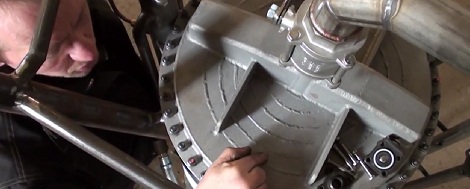While we’re reluctant to say it for fear of being misinterpreted, the new liquid fuel rocket engine being built by Copenhagen Suborbitals is one of the most impressive, daring, and nearly the sexiest machine we’ve ever seen. Although the engine hasn’t been fired yet, [Peter Madsen], Chief launch vehicle designer at Copenhagen Suborbitals, gives an amazing 18-minute-long rundown of the function of each and every tank and tube of the TM65 in this video.
When the TM65 engine begins its firing sequence, valves attached to tanks of alcohol and liquid Oxygen are opened. The Oxygen pours directly into an injector manifold that atomizes the liquid in the combustion chamber, while the alcohol makes a much longer trip down to the engine bell, flowing between the double wall of the chamber and nozzle for cooling. Once the alcohol and Oxygen in the combustion chamber ignite, two gigantic tanks of Helium are opened and the gas is forced down to a heat exchanger at the end of the nozzle, increasing the temperature and pressure of the Helium. The Helium is then routed to the tanks, pressurizing them and forcing fuel and oxidizer into the combustion chamber at 40 liters per second. This entire process happens in only eight seconds; after that, the rocket attached to the TM65 will be on its way upward.
We’re not going to say the TM65 is the best engine ever seen on Hackaday; we’ll leave you to decide that. We can’t wait for the video of the test fire to hit the Internet, though.













